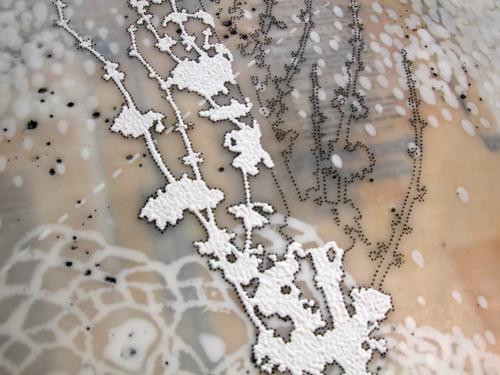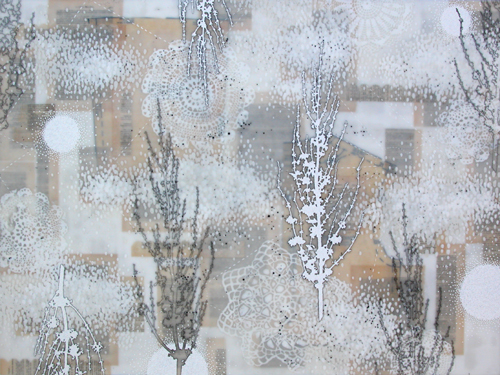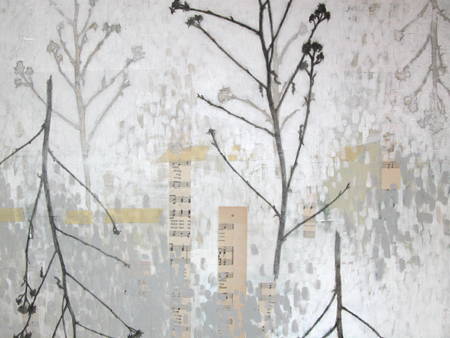I’ve been hard at work in the studio. Here is a look at a larger piece in progress, and some small pieces lined up. The small pieces were a challenge for me (they are 8″ x 10″), because I really prefer to work larger. I think my paintings are generally more successful on a large scale, but this time around I tried approaching the small work a little differently. I treated each as if it were a small, experimental piece of jewelry. I found that taking this approach naturally adjusted the scale that I worked at, and kept me from trying to jam in too much imagery, a common problem for me when I try to work small. These six pieces will be available at Hang Gallery in December.
Here’s another view of my studio work table…
This is something I often do, especially when I am trying something new. I’ll find a way to “mock up” the next element in a painting. This is especially valuable to me because when I start a painting, I only have a vague idea of where I want it to go, and often it takes me someplace completely different. And because I’m always working in transparencies, allowing each layer to show as I build the image, it is especially important to me that I respond to the image by adding each layer in the most aware, informed way possible. By trying out different elements before adding them to the painting, I can be a little more efficient, and often this process leads to innovations that I may not have thought of otherwise. It also allows me to make little adjustments, sometimes minute, that make a big difference in the compositions. These yellow circles may or may not be added- I haven’t decided yet.
Overall, I’m having a productive month in the studio so far…






















